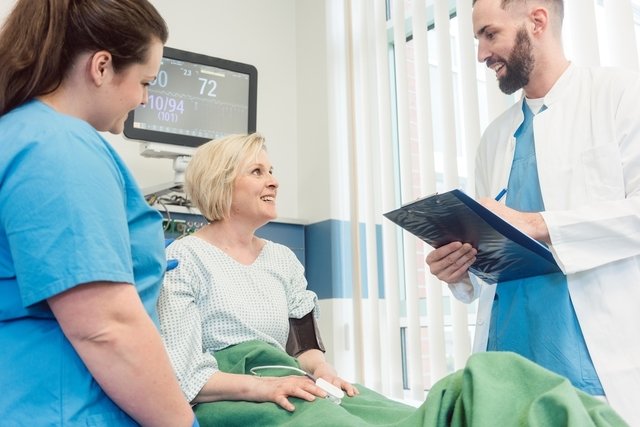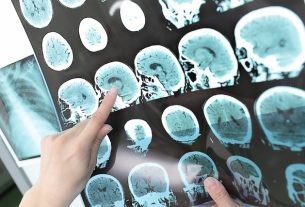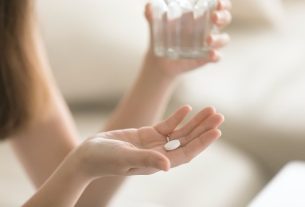Treatment for stroke can be done with medications, such as antihypertensives and anticoagulants, thrombolysis, cerebral catheterization and hemostatic therapy, depending on the type of stroke and its severity.
It is important that treatment for stroke is started as soon as the first symptoms are identified, because the sooner it is started, the lower the risk of sequelae such as paralysis or difficulty speaking. See the main symptoms of stroke.
If you suspect a stroke, it is recommended to seek medical help as soon as possible. Treatment can be started by the doctor in the ambulance on the way to the hospital, with medicines to stabilize blood pressure and heart rate, use of oxygen to facilitate breathing, in addition to monitoring vital signs.

Main treatment options
The main treatment options for stroke are:
1. Medicines
Antihypertensive medications are indicated in the treatment of stroke to control blood pressure, when it is very high. Especially in the case of a hemorrhagic stroke, pressure control is important to prevent bleeding from worsening.
In the case of a hemorrhagic stroke, other medications may also be indicated, such as mannitol, to control intracranial pressure, and anticonvulsants, in the case of seizures, for example.
Furthermore, if the stroke is ischemic, anticoagulant medications, such as ASA and clopidogrel, may also be indicated to prevent the clot from growing in the vessel and help the body eliminate it.
2. Thrombolysis
Thrombolysis is a treatment for ischemic stroke that is usually done within the first 4.5 hours after the onset of symptoms and consists of using medications, such as alteplase and tenecteplase, directly into the vein to dissolve the clot that is obstructing the stroke vessel. brain.
3. Brain catheterization
Cerebral catheterization is indicated in some cases of ischemic stroke and consists of inserting a flexible tube through an artery in the groin to reach the obstructed vessel in the brain, allowing the clot to be removed.
When indicated, cerebral catheterization should be performed within the first 6 to 16 hours after the onset of symptoms. Furthermore, this treatment can be done to complement thrombolysis in some cases. Understand better what brain catheterization is.
4. Hemostatic therapy
Hemostatic therapy consists of correcting abnormalities in blood clotting through the use of vitamin K, fresh frozen plasma and platelet transfusion, for example, and may be indicated to prevent worsening of bleeding in the event of a hemorrhagic stroke.
5. Brain surgery
Sometimes, the treatment of hemorrhagic stroke may involve brain surgery to remove the hematoma formed by the bleeding, which is indicated especially in the most severe cases and heavy bleeding.
6. Physiotherapy
Physiotherapy for people who have had a stroke helps to strengthen muscles, favoring the recovery or maintenance of body movements and improving the person’s quality of life. See how physiotherapy is performed after a stroke.
7. Speech therapy
Speech therapy sessions help improve speech and swallowing, for example, in people who have had these functions affected by a stroke.
8. Occupational therapy
Occupational therapy is a form of complementary stroke treatment that helps the person and their family develop strategies to reduce the effects of stroke sequelae on daily tasks.
Normally, in occupational therapy, exercises are carried out, recommendations for adapting the house and/or bathroom, for example, as well as activities to improve reasoning and movements.
9. Healthy eating
Adopting a healthy and balanced diet after a stroke is important to aid recovery, avoid malnutrition and prevent new stroke episodes.
Furthermore, in cases of stroke where it is necessary to use a tube to eat, the nutritionist will calculate the exact amount of food, in addition to teaching the appropriate preparation.
What is stroke recovery like?
After controlling the initial symptoms, it is common for a person who has had a stroke to remain hospitalized for a period that varies according to their health status. This hospitalization serves to monitor the initial recovery and evaluate the possible consequences of the stroke.
After discharge from the hospital, stroke recovery can take up to months or years in some cases and the person is not always able to recover completely, depending on the severity of the brain impairment.
Some sequelae that may remain after a stroke include difficulty speaking, loss of strength on one side of the body, difficulty swallowing food, controlling urine and/or feces and changes in reasoning or memory, for example. Learn about other possible sequelae of stroke.
Bibliography
- STATPEARLS. Hemorrhagic Stroke. 2023. Available at: <https://www.ncbi.nlm.nih.gov/books/NBK559173/>. Accessed on June 19, 2023
- CDC. Treat and Recover from Stroke. Available at: <https://www.cdc.gov/stroke/treatments.htm>. Accessed on June 19, 2023
- STROKE ASSOCIATION. Treatments. Disponível em: <https://www.stroke.org.uk/what-is-stroke/diagnosis-to-discharge/treatment>. Acesso em 19 jun 2023
- CLEVELAND CLINIC. Stroke. Available at: <https://my.clevelandclinic.org/health/diseases/5601-stroke>. Accessed on June 19, 2023
- MOROTTI, Andrea; POLI, Loris; COSTA, Paolo. Acute Stroke. Semin Neurol. Vol.39, n.1. 61-72, 2019
- STATPEARLS. Acute Stroke. 2023. Available at: <https://www.ncbi.nlm.nih.gov/books/NBK535369/>. Accessed on June 19, 2023

Sign up for our newsletter and stay up to date with exclusive news
that can transform your routine!
Warning: Undefined array key "title" in /home/storelat/public_html/wp-content/plugins/link-whisper-premium/templates/frontend/related-posts.php on line 12
Warning: Undefined array key "title_tag" in /home/storelat/public_html/wp-content/plugins/link-whisper-premium/templates/frontend/related-posts.php on line 13



